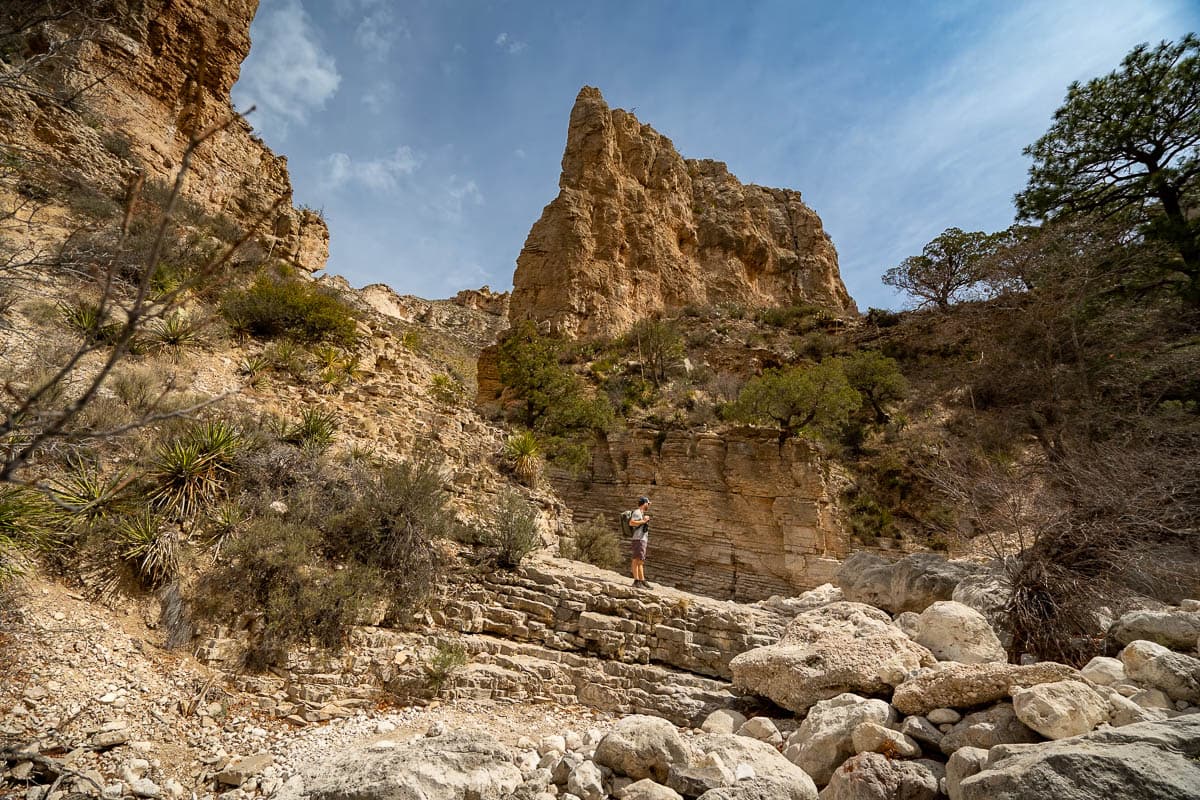Guadalupe Mountains National Park is home to impressive canyons, stunning rock formations, and towering mountains, including the tallest peak in the entire state of Texas! If you want to experience a little bit of everything the park has to offer, consider trying the Devil’s Hall Trail, one of the most unique hikes in the Guadalupe Mountains.
This post may contain affiliate links. If you make a purchase through them, we may receive a small commission, for which we are extremely grateful, at no extra cost to you.
Psssst… looking for other cool things to do in Texas? Check out:
- Balanced Rock Trail, the Most Unique Hike in Big Bend National Park
- The Lost Mine Trail in Big Bend National Park
- The Window Trail in Big Bend National Park
- Visiting Boquillas del Carmen from Big Bend National Park: Everything You Need to Know
- How to visit Big Bend Hot Springs
- 11 Incredible Things to do in Big Bend National Park
About the Devil’s Hall Trail
- Length: 3.8 miles
- Elevation gain: 600 feet
- Difficulty: Moderate
- Dog-friendly? Like most U.S. National Park trails, you’ll sadly need to leave the dogs at home for this one!
- Trail map

How to get to the Devil’s Hall Trail
The trailhead for Devil’s Hall is located here in Guadalupe Mountains National Park, near the northwestern border of Texas. It’s located in the southern section of the 135 square mile park, close to the Pine Spring Visitor Center.
Guadalupe Mountains is fairly remote and is not particularly close to any major U.S. cities. If you need to fly in, your best bet is El Paso International Airport, about two hours west of the park. You’ll need to rent a car to get to and around Guadalupe Mountains as, unlike some of the national parks, there’s no shuttles here.
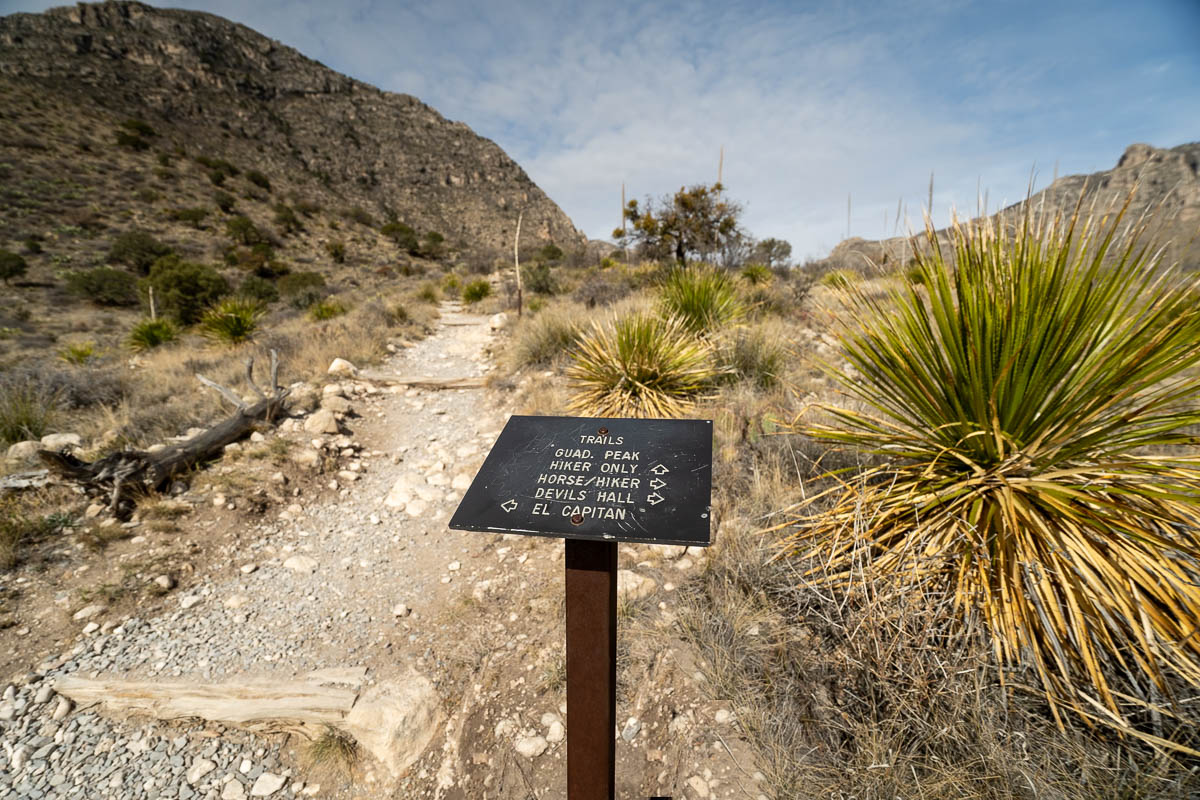
To enter Guadalupe Mountains, there’s a $10 per person entrance fee (for those 16 years and older) that’s good for a week, which you can pay at the Pine Spring Visitor Center. Alternatively, you can use the America the Beautiful Pass, which, for $80, gets you into all of the U.S. National Parks and over 2,000 federally managed lands for an entire year for free!
Once you’ve paid your entrance fee, head to the Pine Springs trailhead parking lot. It’s honestly a bit funky—it offers a few dozen parking spaces and also partially serves as the Pine Springs Campground, with several larger spaces saved for RV campers.
Given that many of the park’s most popular hikes, like Devil’s Hall or Guadalupe Peak, leave from here, it’s not uncommon for the lot’s limited parking spaces to fill up, especially during busy times, like on weekdays in fall or spring.
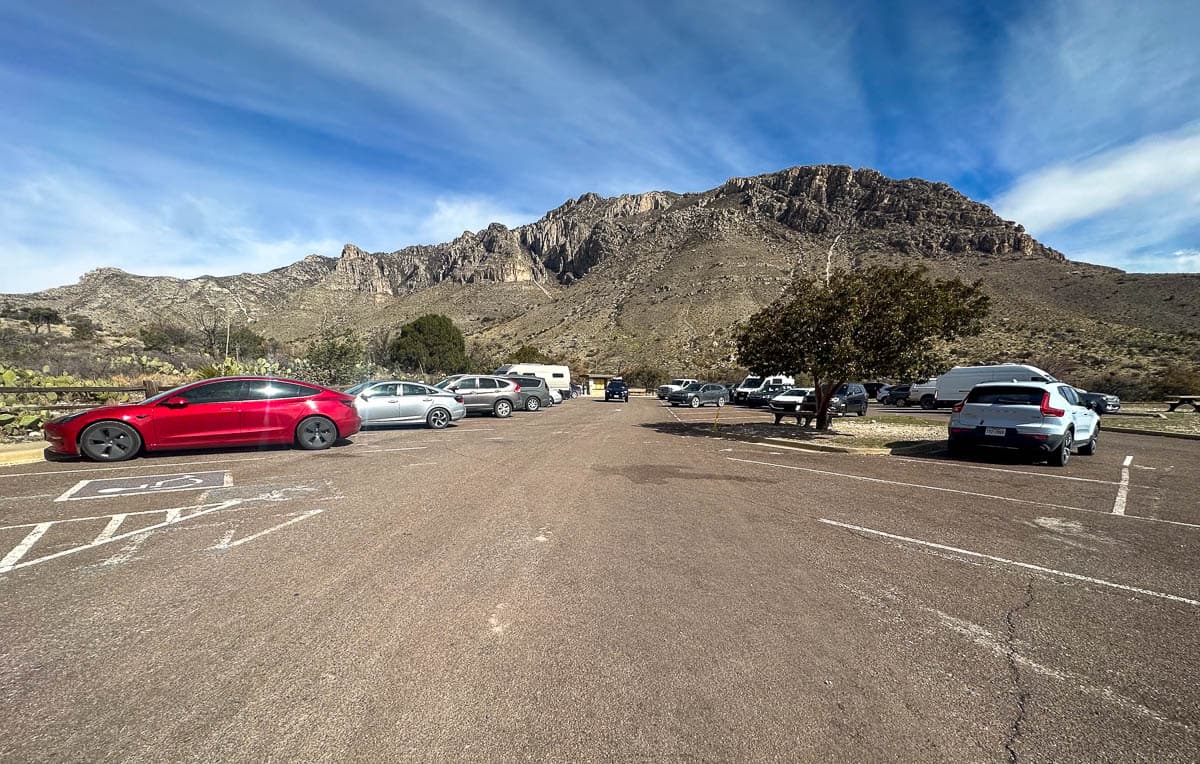
My husband, Justin, and I visited on a weekday in March and snagged one of the last spots around 9 AM. If it’s totally filled up, you can alternatively park back at the visitor center, which will add 0.8 miles roundtrip to your hike, or at an overflow lot along Highway 62, which will add 1.6 miles roundtrip.
What to expect along the Devil’s Hall Trail
From the trailhead, you’ll start climbing up a dirt pathway, through cacti and other succulents. You’ll reach the first junction just 0.1 miles into the trail, where you’ll follow signs for Devil’s Hall to your right.
For the next mile, you’ll follow along the dirt pathway that climbs gently uphill through a canyon, with Hunter Peak towering on your right hand side and Guadalupe Peak to your left.

At one mile in, you’ll reach another junction—the fork to the left leads to the Guadalupe Peak Trail (the aforementioned tallest mountain in Texas!), so instead, turn right and climb down into a rocky wash.
The wash, which extends for the next 0.75 miles, is lined with boulders of all sizes, from small to MASSIVE.
There’s no official trail here—rather, it’s a choose-your-own-adventure for the easiest (and safest!) way to navigate through the rocks along the dry riverbed. You should expect to have to use your hands to scramble over some of the larger boulders here.
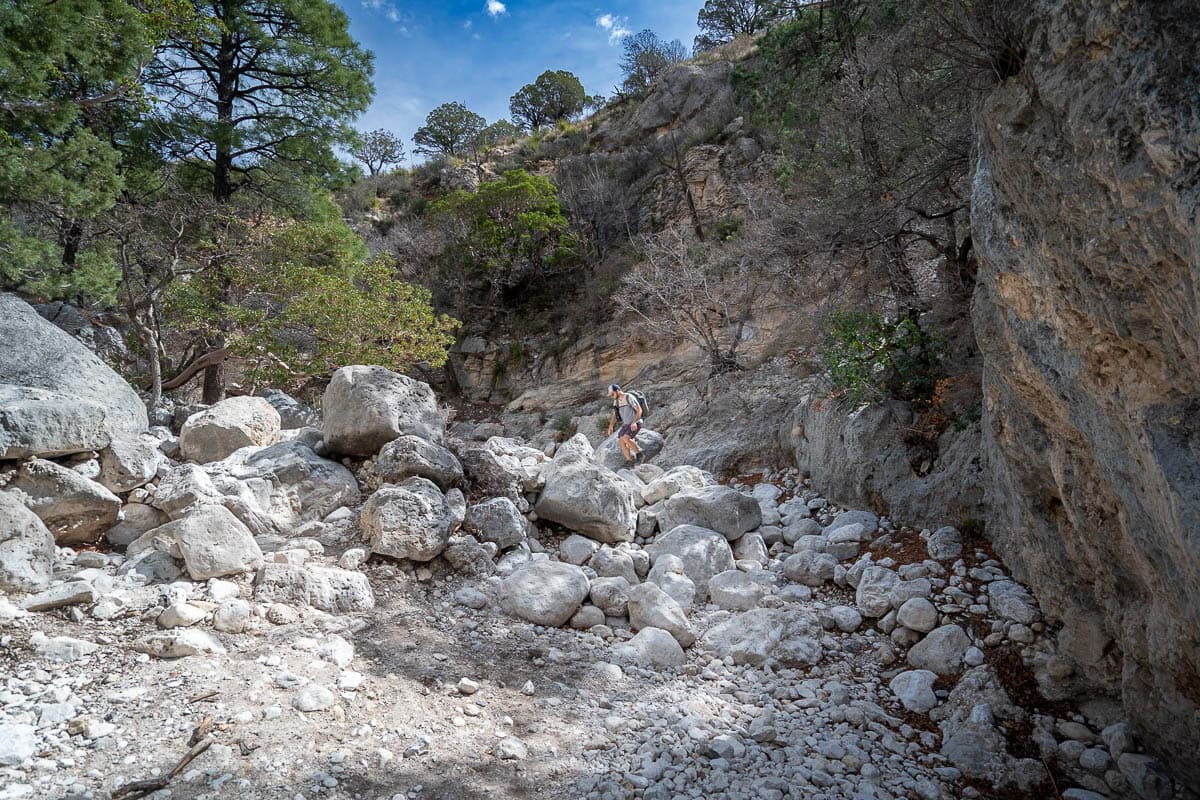
Justin and I enjoy a bit of scrambling while hiking, so we thought this portion was pretty fun, but if you have mobility issues or are hiking with really little kids, this portion of the trail may not be your cup of tea—it would be really easy to fall and hurt yourself here!
In the last 0.1 mile of the trail, you’ll reach a funky canyon, with a jagged rock formation in front of you and a steep, layered rock wall to the left.
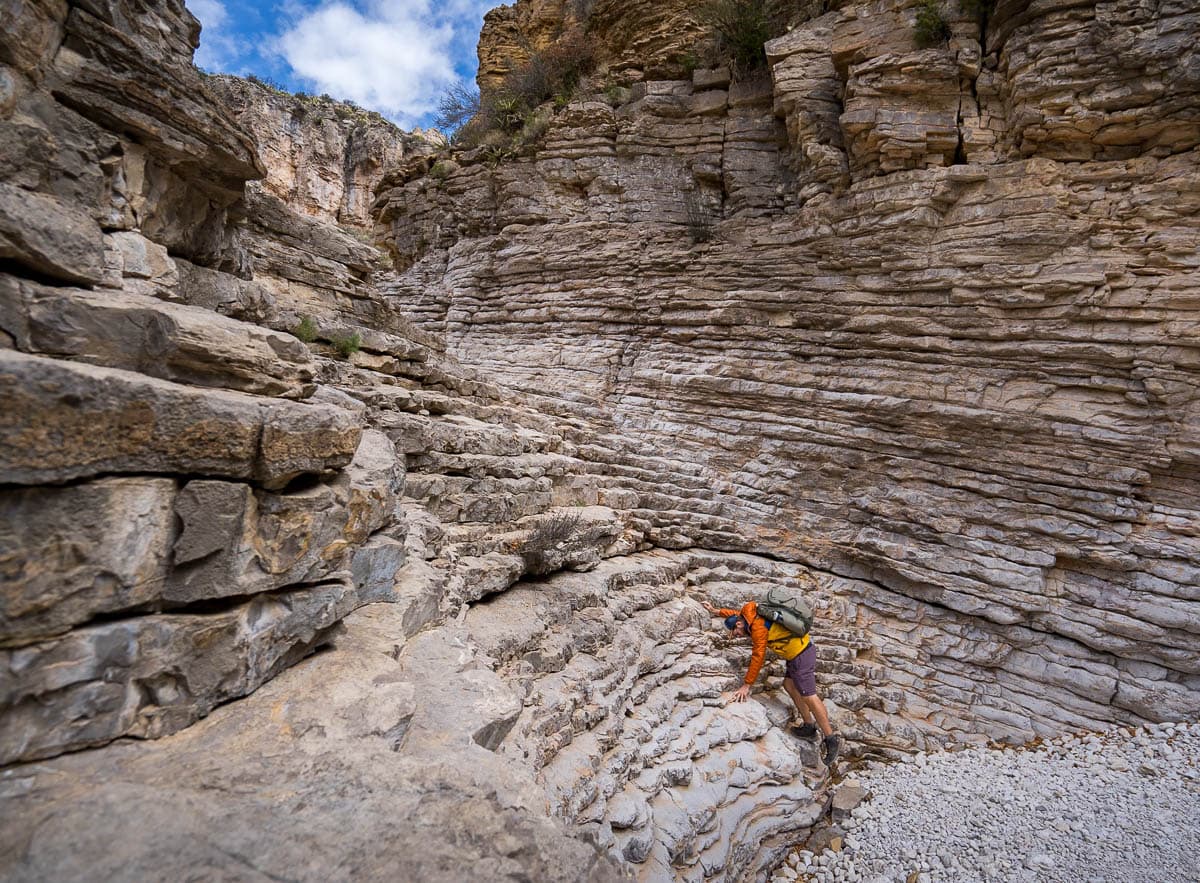
I initially thought this was the end of the trail, but nope—to reach the actual Devil’s Hall, you have to climb up the rock wall, using the layers as stairs (and handholds, when needed!). Keep an eye out for the little pool of water that collects on one of the larger steps towards the middle tiers.
Continue hiking up the rocky wash for a few minutes until you reach the Devil’s Hall, a slot canyon whose walls reach 100 feet high and are just 15 feet apart.
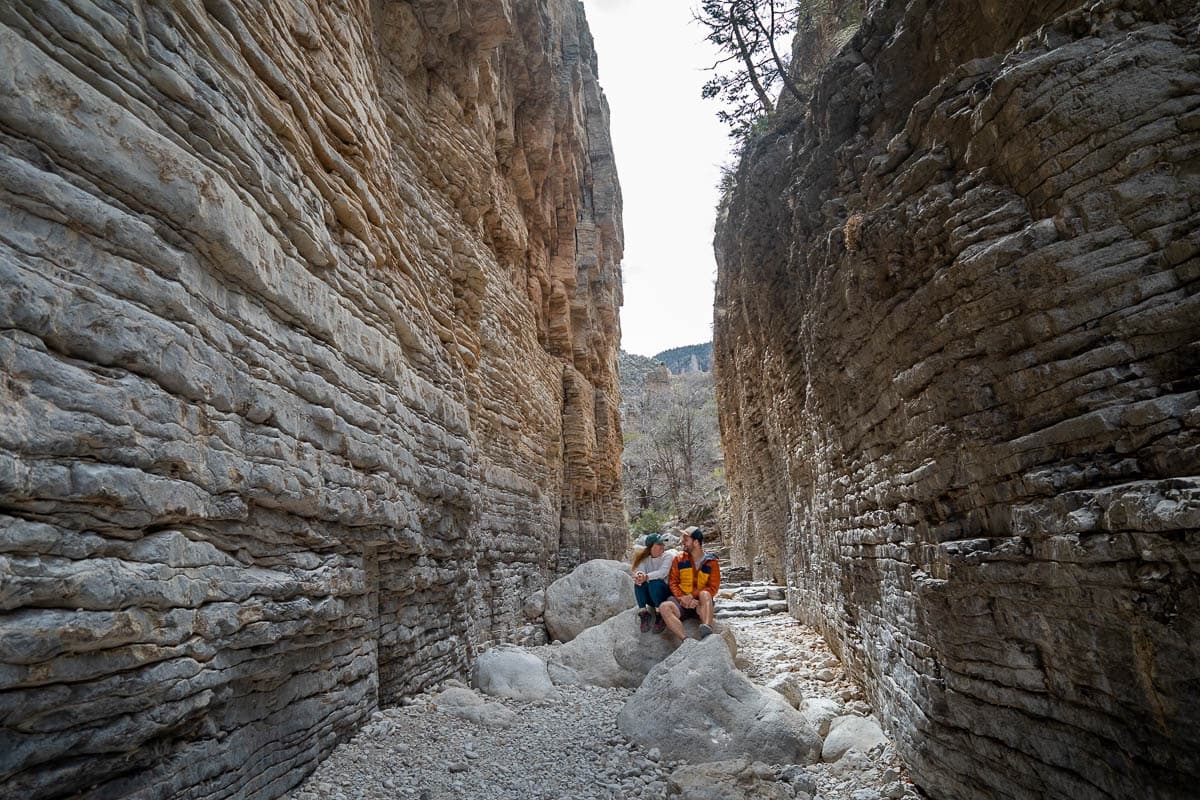
When you’re done taking in the impressive canyon, simply retrace your steps back to the trailhead.
When to hike the Devil’s Hall Trail
The best time to visit Guadalupe Mountains is October through April, when the weather is pleasantly warm and the skies are clear. I’d just recommend avoiding the trail on particularly chilly mornings during the coldest months (December through February)—it’s not unusual for the temperature to drop below freezing at night and ice can form on the (already slippery!) rocks that you need to scramble over.
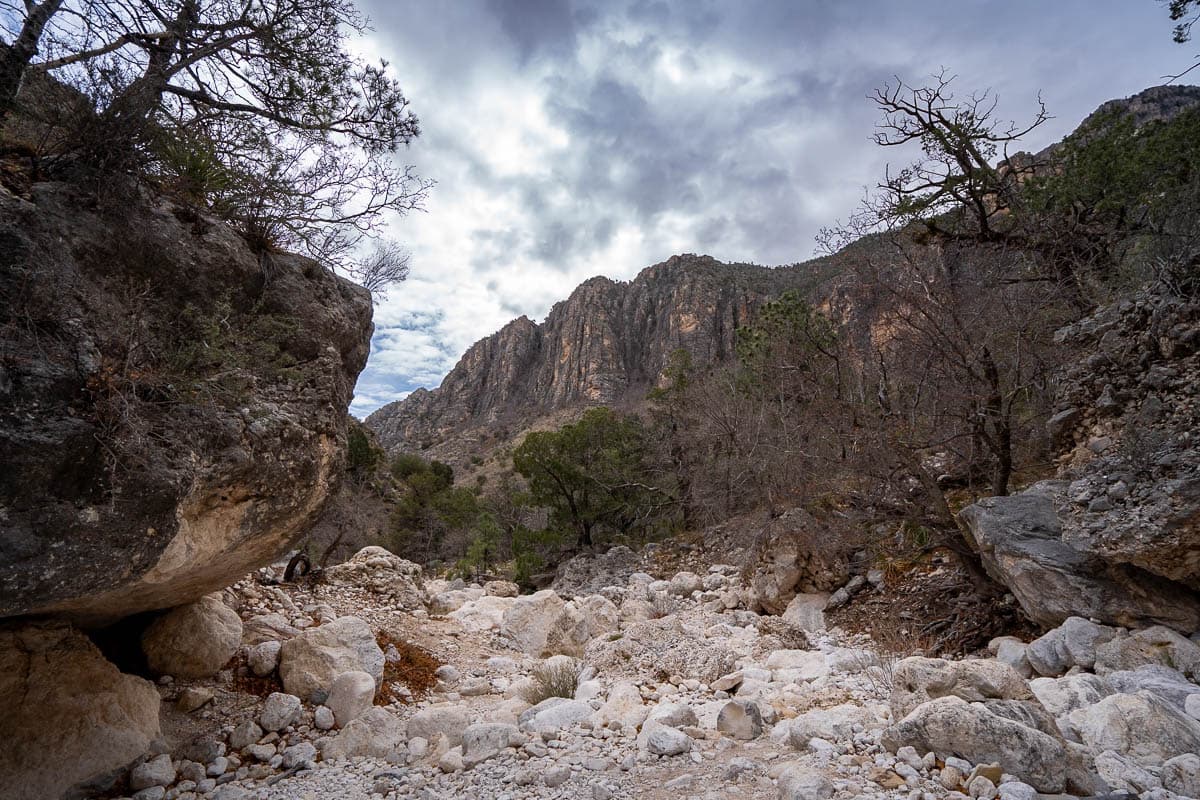
I’d recommend avoiding hiking the Devil’s Hall Trail—and really anywhere in Guadalupe Mountains National Park—from June through September, when the heat index can regularly exceed 100 degrees. If you do visit during the warmer months, be sure to hit the trail bright and early to beat the hottest parts of the day.
You should also avoid hiking on this trail when it’s raining or is supposed to rain (the rainiest season just so happens to be July through September!), as the canyon can have dangerous and unpredictable flash flooding.
Tips for the Devil’s Hall Trail
Add on Guadalupe Peak Trail
If you’re up for a real adventure, consider tackling Devil’s Hall and Guadalupe Peak (did I mention it’s the tallest mountain in Texas?!) in one go.
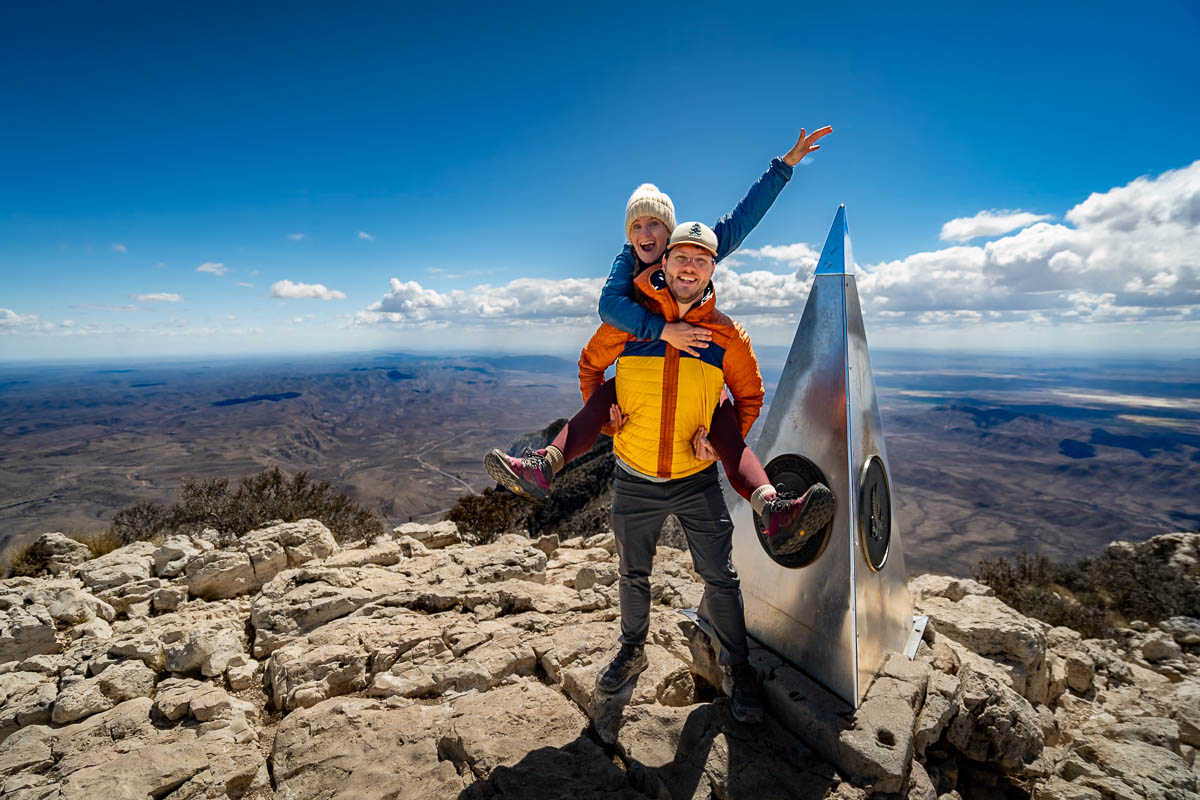
Here’s the stats for a combined hike to Guadalupe Peak and Devil’s Hall Trail:
We’d recommend hitting Guadalupe Peak first. It’s the more challenging—and, in my opinion, the more epic—of the two trails, so you can determine whether you have enough energy and time left on your return trip to hike to Devil’s Hall.
To combine the two trails, hike to the top of Guadalupe Peak, but, on your return trip to the trailhead, you’ll run into a junction with a stock trail on the left hand side about 7.3 miles into your hike. The trail will be marked with a sign that says “No stock beyond this point”.
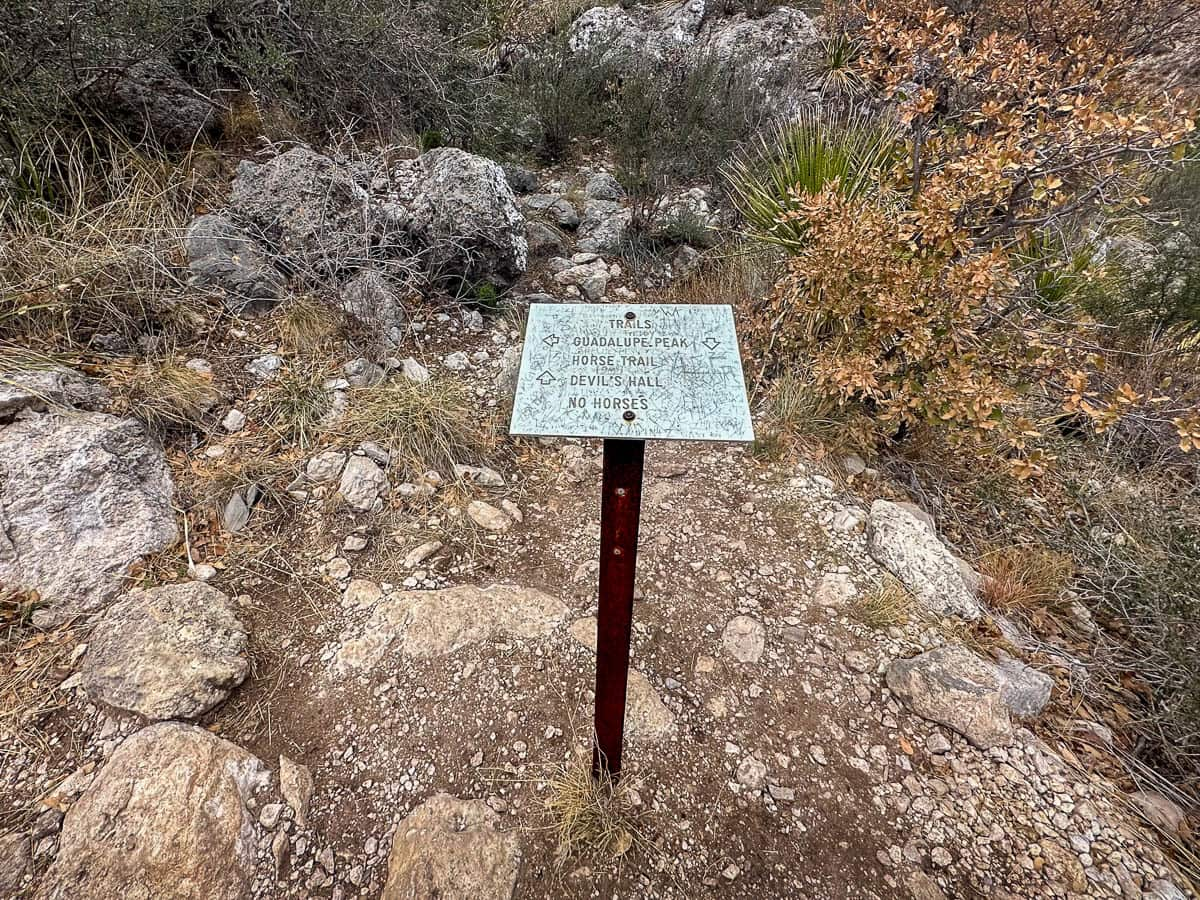
You can follow this trail downhill for about 0.7 miles, which eventually connects to the rocky wash portion of the Devil’s Hall Trail.
To be honest, Justin and I hiked these trails on separate occasions and I’d imagine it would be pretty exhausting to scramble over all the slippery rocks along this wash after you’ve literally climbed Texas’ tallest mountain. So I’d really only recommend attempting combining these two trails if you’re a very regular and fit hiker.
Download the trail map on AllTrails
The first part of this trail is pretty straightforward, but once we got to the rocky wash portion, it was a bit confusing on which direction we should be going.
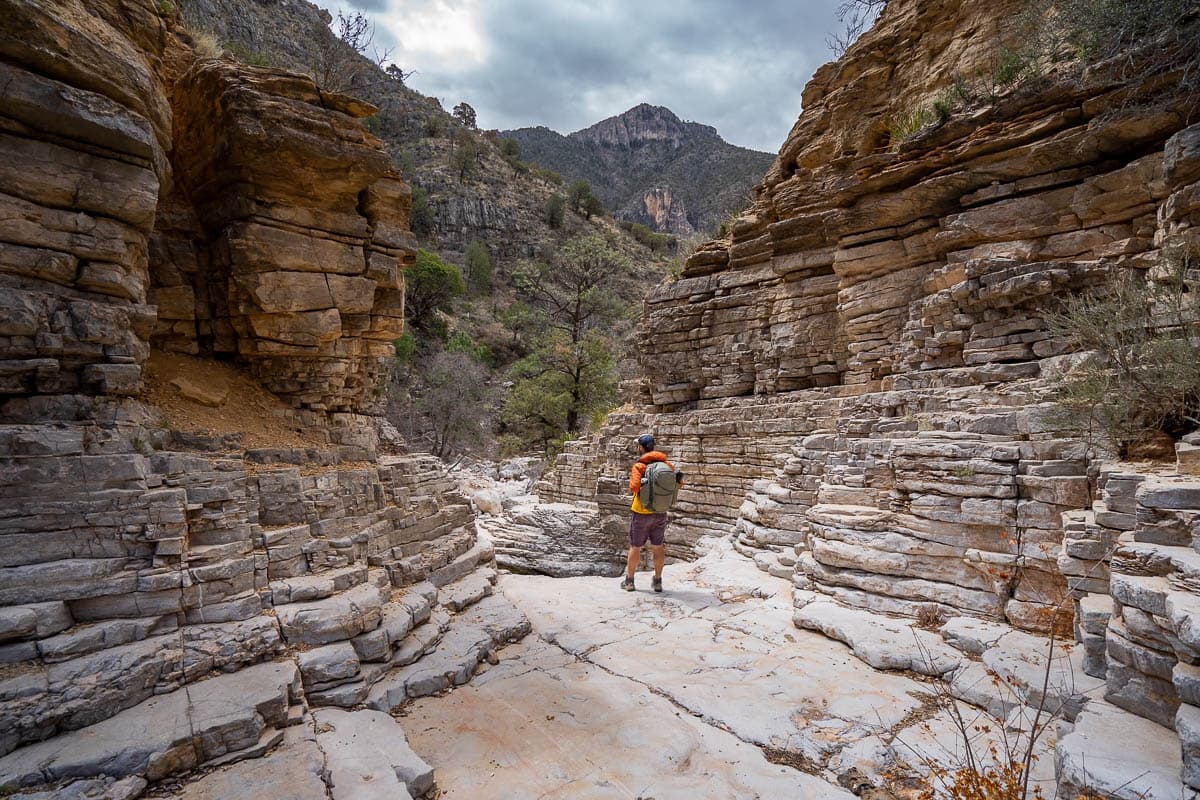
There’s no cell service along the trail, so I’d recommend downloading an offline map on AllTrails before your visit. We’re SO glad we were able to track our progress along the trail with GPS whenever we felt a bit turned around!
I hope you enjoy the Devil’s Hall Trail—between its boulder scrambling and unique rock formations, it’s definitely worth your time in Guadalupe Mountains National Park! Do you have any questions about this trail? Let us know in the comments below!

